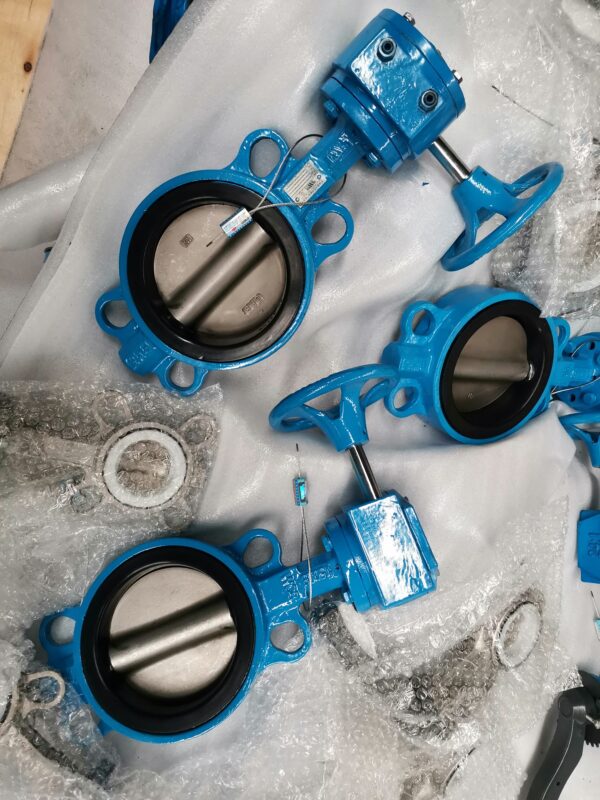The design of a 1-inch butterfly valve for applications requiring rapid response times involves several key considerations to ensure quick and efficient valve operation. Here are some factors that are typically taken into account:
- Actuation Type: The choice of actuation type plays a crucial role in achieving rapid response times. Pneumatic or electric actuation is often preferred for quick and precise control. The actuator should be selected based on its speed and responsiveness to control signals.
- Actuator Sizing: Proper sizing of the actuator is essential. 1 inch butterfly valve A well-sized actuator ensures that the valve can open or close rapidly in response to control signals, meeting the specific requirements of the application.
- Fast-Acting Mechanism: The valve design may incorporate features that enable fast actuation, such as a quick-opening or quick-closing mechanism. This ensures that the valve can respond rapidly to changes in the control system.
- Low Inertia Components: Components with low inertia, such as lightweight discs and shafts, contribute to faster response times. Minimizing the mass of moving parts allows the valve to accelerate and decelerate more quickly.
- High Torque Actuators: Selecting an actuator with high torque capabilities ensures that the valve can quickly overcome resistance and move to the desired position. This is particularly important for applications requiring rapid response.
- Advanced Control Systems: Integration with advanced control systems, such as Programmable Logic Controllers (PLCs) or Distributed Control Systems (DCS), enables precise and rapid control of the valve. Fast communication protocols enhance response times.
- Position Feedback Sensors: Including position feedback sensors, such as limit switches or position transmitters, provides real-time information about the valve’s position. This feedback allows the control system to make quick adjustments, improving response times.
- Low Friction Seals: The choice of seals and bearings can impact friction levels. Low-friction materials and designs reduce resistance, allowing the valve to move more quickly in response to actuation.
- Reduced Dead Time: Dead time, the time between a control signal and the valve’s response, should be minimized. This involves optimizing the control loop and ensuring that the valve responds promptly to changes in the process conditions.
- Compact Design: A compact and lightweight design contributes to faster acceleration and deceleration. This is particularly important for smaller-sized valves, such as a 1-inch butterfly valve, where weight and size constraints may be more critical.
- Quick-Opening Disc Profile: The disc profile can be designed for quick opening to minimize the time it takes for the valve to go from a fully closed to a fully open position. This design feature is especially relevant for applications requiring rapid response.
- Low Friction Seat Materials: Choosing seat materials with low friction properties helps reduce the resistance encountered during valve movement, contributing to faster response times.
- Temperature and Pressure Considerations: The valve design should consider the operating temperature and pressure conditions to ensure that the materials selected can withstand these factors while still allowing rapid response.
- Quality of Materials: High-quality materials, including alloys and coatings, china butterfly valve can contribute to the durability and longevity of the valve while maintaining the required rapid response characteristics.
- Emergency Shutdown Features: Incorporating features for emergency shutdown, such as a fail-safe mechanism, ensures that the valve can respond rapidly in critical situations.
- Compliance with Industry Standards: Ensuring that the design meets or exceeds relevant industry standards for performance and safety is crucial. This includes standards related to response times, reliability, and durability.
By carefully considering these factors in the design process, manufacturers can produce 1-inch butterfly valves that meet the specific requirements of applications demanding rapid response times. It’s important to conduct thorough testing and validation to verify the actual performance of the valve under different operating conditions.
